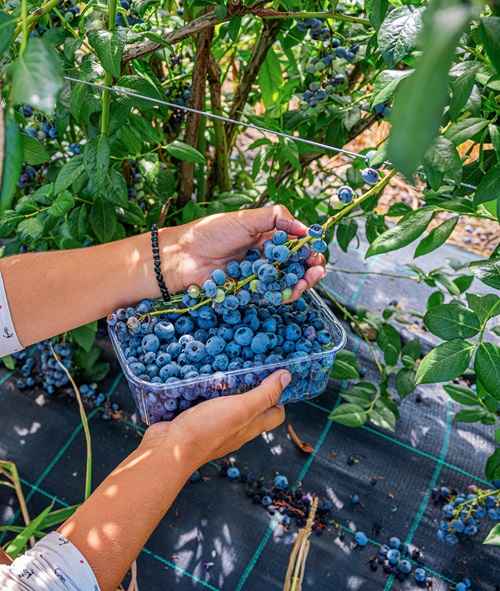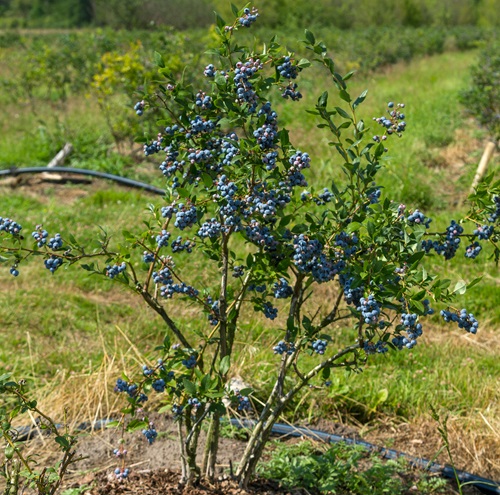Looking for Tricks to Double Your Blueberry Harvest? Let’s learn these tips to boost and extend yield for an abundant supply of these delicious fruits!
Given how pricey they are in the market, growing this fruit may seem challenging! But with attention to a few details, it’s fairly easy and super rewarding! Homegrown fresh blueberries are a delight, especially when you have endless buckets to relish. Follow these tricks to double your blueberry harvest in containers or your garden!
Tricks to Double Up Your Blueberry Harvest
Before we dive in, here’s a gentle reminder to be patient! Blueberries scarcely bloom and fruit during the first year after planting. Best discard the first round of blooms so your young plant may focus on establishing roots, not seeds or fruits! And slowly but surely, you’ll have a robust harvest in the coming years!
1. Choose the Right Variety
To double your blueberry (Vaccinium) harvest, choose a variety that suits your region’s climate. Native to North America, these varieties are largely classified as northern highbush, southern highbush, rabbiteye, half high, and lowbush.
We’ll focus on the highbush varieties that produce more abundantly than lowbush or “wild” ones. Northern highbush blueberries grow well in USDA zones 4-7 and need about 600-1000 chill hours to prepare for fruiting.
These thrive in colder areas where they stay dormant for longer. Their buds won’t break too early just to die during frost! Propagate them in spring, as this will help its roots establish before winter.
Now, southern highbush blueberries prefer a sunny Mediterranean climate and don’t need much winter chilling. These are hardy to USDA zones 6-10 and need about 200-600 chill hours.
As the name suggests, pick these for the south, southwest, and west coast regions of the USA. Grow southern varieties from fall and winter over spring, as their roots can develop before summer.
The main difference between these two is the chill hours and hardiness zones, but they are similar in most other aspects. Typically, these highbush varieties mature earlier than rabbiteye blueberries.
Southeastern US native Rabbiteye is hardy to zones 6-10 and has varying chill-hour needs. It grows larger and can live up to decades! So, select varieties that correspond to your region and plant different types together. Why? Read on!
2. Plant in Pairs or More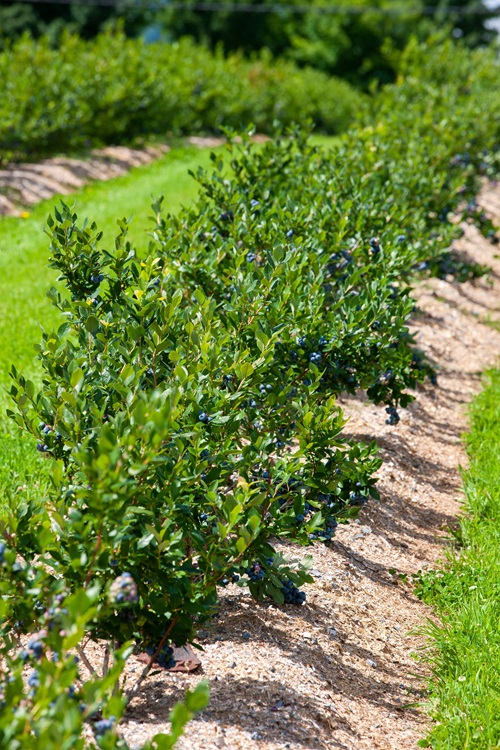
More, the merrier! It’s really that simple. Most varieties of blueberries benefit from cross-pollination via bumblebees and other native insects. Planting two or more varieties ensures flowers are fertilized with pollen from each other, giving you larger, sweeter berries.
Blueberries appear as early, mid, or late-season-bearing varieties. Pairing them strategically can grow your harvest season substantially to over three summer months! When you grow different varieties, select cultivars that bloom at the same time for successful cross-pollination.
For instance, pair early-season highbush cultivars like Earliblu and Duke with mid to late-season ones like Darrow, Wareham, and Elizabeth. Together, these will bear fruit through summer into fall!
And with rabbiteye varieties that absolutely thrive on cross-pollination, flowering occurs around spring and sometimes even winter. Fruit typically occurs from late spring through summer, ripening over four to six weeks, but not all at the same time! Pair early ones like Premier and Climax with late-bloomers like Tifblue and Brightwell for extended harvests.
3. Attention to Soil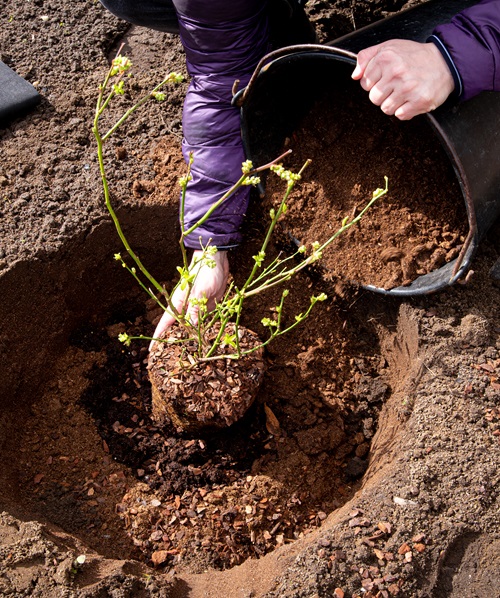
Blueberries favor acidic soil with good organic matter. Essential blueberry nutrients like iron vanish in increasingly alkaline soil. Both rabbiteye and highbush blueberries need a pH of around 4.0-5.5.
They cannot tolerate too much alkalinity. Conduct a soil test, and if you need to amend the medium, add elemental sulfur in powder or pill form over several months or annually till the soil attains optimum acidity. Mix damp peat moss or milled pine bark with soil in planting holes, which helps preserve moisture and acidity.
To double your blueberry harvest, create a healthy planting foundation and make a layer of four inches of pre-moist peat moss, which lowers the soil pH in your planting area. Apply a quarter to half a cup of earthworm castings per 100 square feet.
Blend the earthworm castings and peat moss into the soil 10-12 inches deep to enhance the organic matter and reduce soil pH. If your garden soil is highly alkaline, with a pH of 7.0 or more, amending it for blueberries is tough. You can overcome this issue by planting blueberries in pots.
Note: Avoid iron sulfate or aluminum sulfate, as these are known to cause plant toxicity.
4. Feed them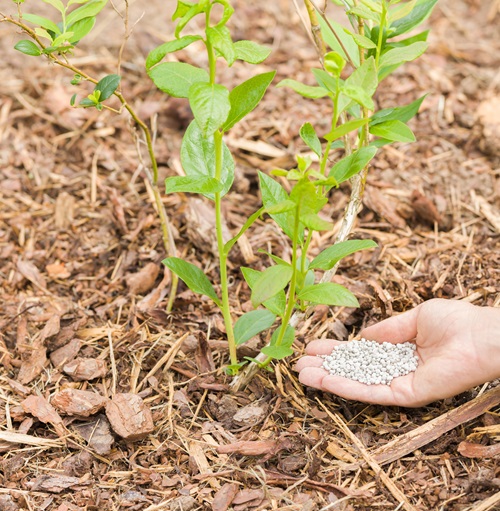
Fertilize your blueberry according to its cycle thrice a year. In spring, feed the new plant when growth appears and buds open. During late spring/early summer, apply a second round of fertilizer six weeks later to assist in growing berries and foliage.
The third feeding round comes after harvesting blueberries mid-summer to revive and fortify them for longer.
Most fruit plants need yearly nitrogen fertilizer to help grow their roots, leaves, and fruits. For blueberries, avoid nitrate forms of nitrogen that can harm their roots. Choose from sources like urea, sulfur-coated urea, ammonium sulfate, or cottonseed meal.
Apply a 7-7-7 or 4-3-4 fertilizer made for acid-loving plants. Fertilizers for rhododendrons and azaleas also work well on blueberries. However, rabbiteye varieties are sensitive to overfertilization.
Remember that you cannot have a bumper harvest by just using fertilizer on blueberries; you must also provide nutrition to the soil. After a soil test, incorporate organic material like aged manure or compost into the medium.
5. Water them Adequately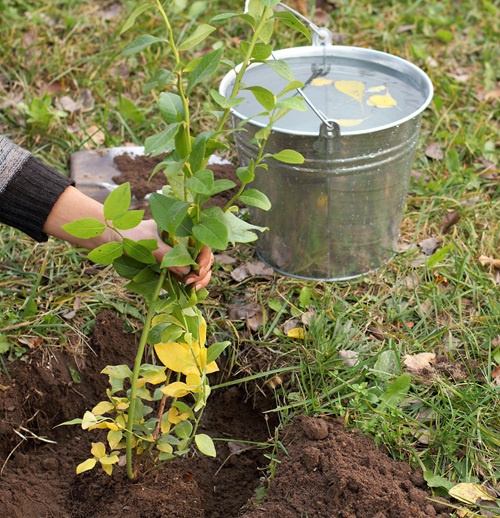
Blueberries lack root hairs necessary for the effective uptake of water and nutrients, making them extremely sensitive to fluctuations in moisture content. With fine, shallow roots, blueberries have a high demand for water and nutrients during fruit production and after harvest as they prepare for dormancy.
Water your plants at least an inch deep across the soil once a week during the growing season, and increase it to four inches deep when they produce fruits and ripen, ensuring that the soil is moist consistently and evenly on all sides of the plant.
Underwatering during late summer, when buds emerge and fruits develop in the following summer, will lead to smaller berries, while overwatering will give you large, bland berries.
6. Mulch your Blueberries
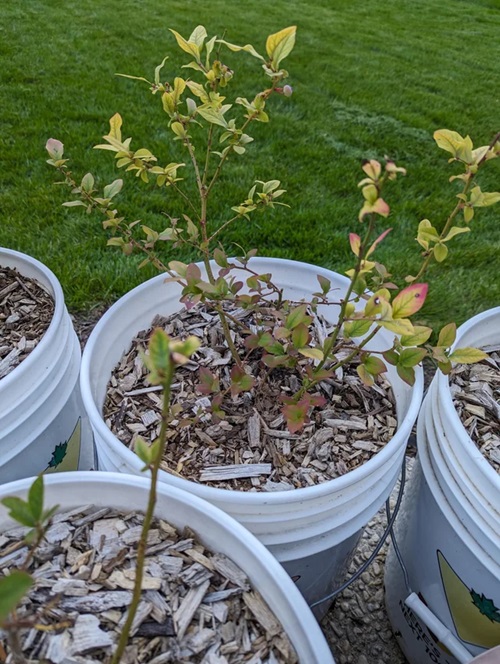
Spread a 2-3 inch layer of organic mulch around the plant’s base to encourage it to grow faster and produce more berries. You can also use pine straw, wood chips, or compost to help the plant stay moist and stop weeds from stealing nutrients.
As the mulch breaks down, it adds organic matter to the soil. You’ll see steady growth and a good amount of blueberries by mulching.
7. Prune for Berry Surplus
Blueberries primarily fruit on new wood that is 1-2 years old. It’s on this fresh growth that flower buds form and develop into fruit. And as wood ages beyond this period, it becomes less productive, bearing small or no fruits while burdening the plant’s resources. Old wood is also more prone to diseases and pests.
Pruning helps remove this deadweight and allows fresh, fruitful stems to manifest. Avoid cutting back in the first couple of years, but remove any dead, damaged, or broken parts of the branches. And remove fruit buds in their early years to help the plant develop roots.
Subsequently, once the plant is at least three years old with at least 15-18 canes that stem from the crown, prune two or three of the oldest stems down to the ground and trim any tips without buds.
Once the blueberry bushes mature, prune inwards, removing old and retired central canes. The best time to do this is when the plant is dormant, and the large buds are easy to see, typically in winter and early spring. Feel free to thin out dormant buds to get juicier berries.
Cut about 1/4 inch above healthy buds using sharp bypass pruners to make clean, angled cuts. Also, rabbiteye varieties don’t need as much pruning—just thin out lower limbs to prevent fruits from touching the soil initially.
8. Give Protection

The simplest way to keep the berries healthy is to frequently check the leaves, stems, flowers, and fruits. This will help you notice any problems early and fix them before they get worse.
If you already have a pest issue in your garden, get beneficial predatory insects such as lacewings or ladybugs to deal with these intruders. Also, look out for wild animals and birds that munch on berries. You can protect your blueberry bush from birds and Japanese beetles by building a DIY netting shield over the plants.


